Best
Overall Bassoon
-
Overall: Full German key system with silver-plated keys.
-
Best Feature: German bell with an attractive synthetic-ivory ring.
-
TedScore™: 9/10
Best
Overall Clarinet
-
Overall: Made from naturally-aged grenadilla wood.
-
Best Feature: Silver-plated key tone holes and black leather pads deliver reliable performance.
-
TedScore™: 9/10
Best
Beginner Bassoon
Student Bassoon Durable, Beginner Bassoon
-
Overall: Resonate ABS body combines wood-like sonic qualities with improved durability.
-
Best Feature: Heckel key system with nickel-plated keys and kid leather pads.
-
TedScore™: 8/10
Have you ever felt the urge to tap your foot into the enchanting sound of woodwind instrument and pondered the intriguing comparison between the Bassoon Vs clarinet?
I can still recall the first time I puffed my cheeks and played the clarinet—it felt like I was infusing life into a piece of wood, turning my breath into music.

Each instrument has its unique personality and tells a different story—like a musical, Dr. Dolittle, conversing with the animals in their language.
In this article, I’ll take you on a sonic adventure, delving into the distinctive traits of these two musical powerhouses. Keep reading as we go on a fun journey that will grab your attention and might even inspire your next musical adventure!
Physical Characteristics
Let’s stroll through the world of woodwind instruments, where the clarinet and bassoon stand out with their unique charm. Each has special design details that make them stand out in the orchestra.
Design and Construction
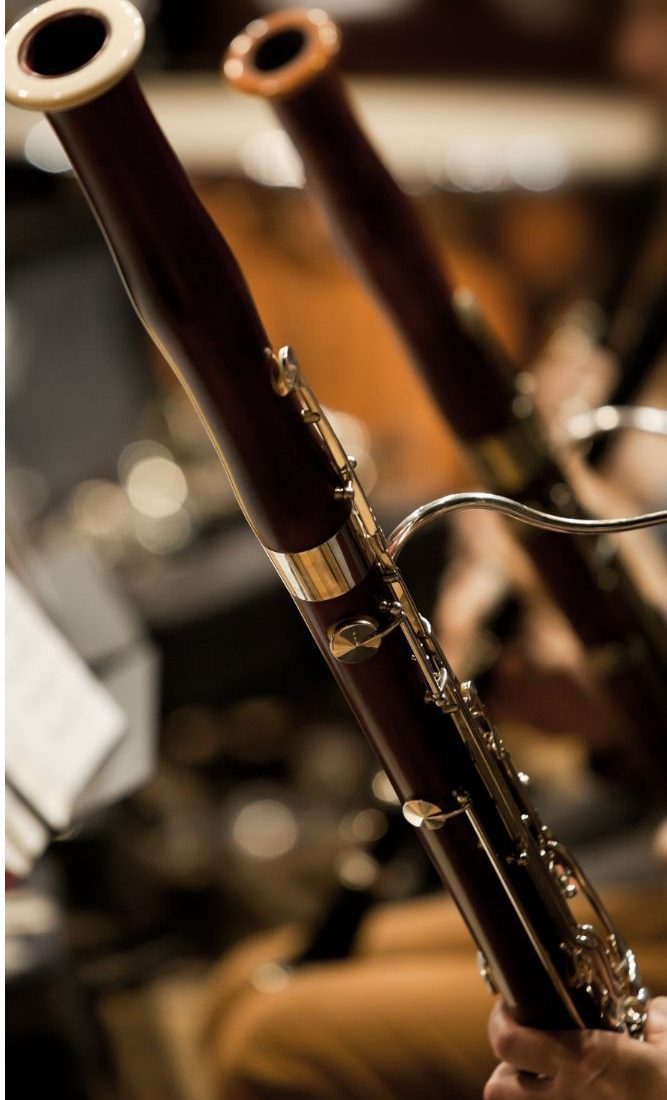
The clarinet sports a sleek, cylindrical tube, streamlined and svelte, elongating to about 26 inches. It’s my trusty companion, light enough to pirouette in my hands without strain.
On the other hand, the bassoon is an intricate marvel, stretching up to a majestic 8 feet when assembled, with its lengthy, conical tube doubling back on itself for a deep, resonant voice.
Its grandeur demands a harness to aid in handling those extended symphonic tales.
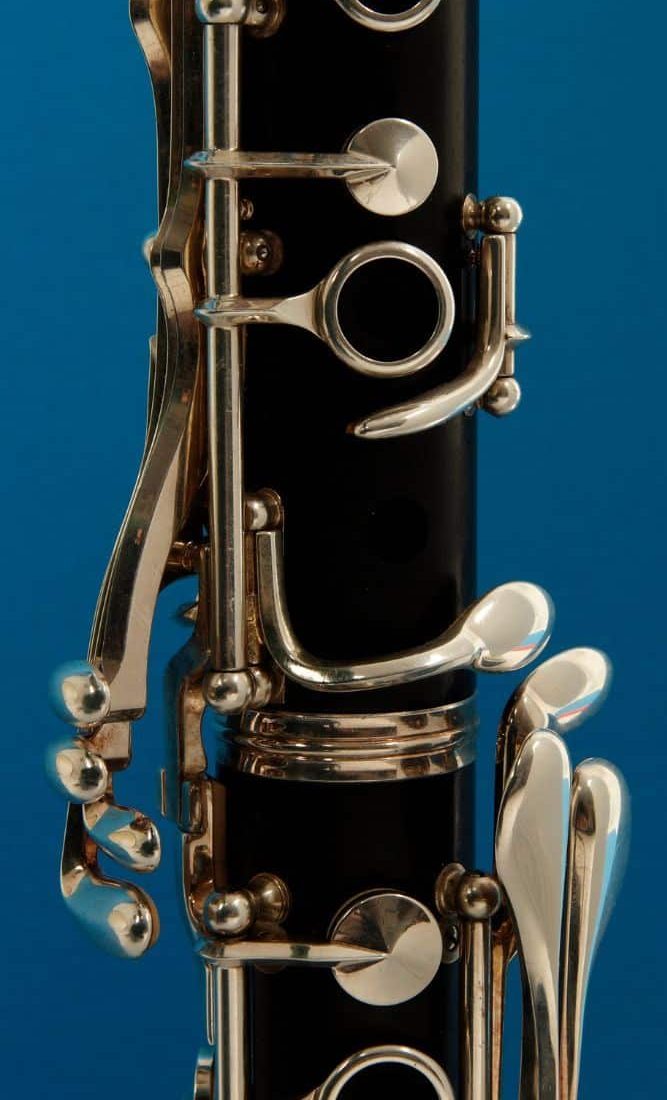
I’m fascinated by the clarinet’s simplicity, with its single reed resting on the mouthpiece—similar to a saxophone but with its distinct, melodic voice. The bassoon speaks through a double reed, producing breathy sounds like the oboe.
The reed of each instrument is the key to its character, giving birth to its unique tone.
Materials Used
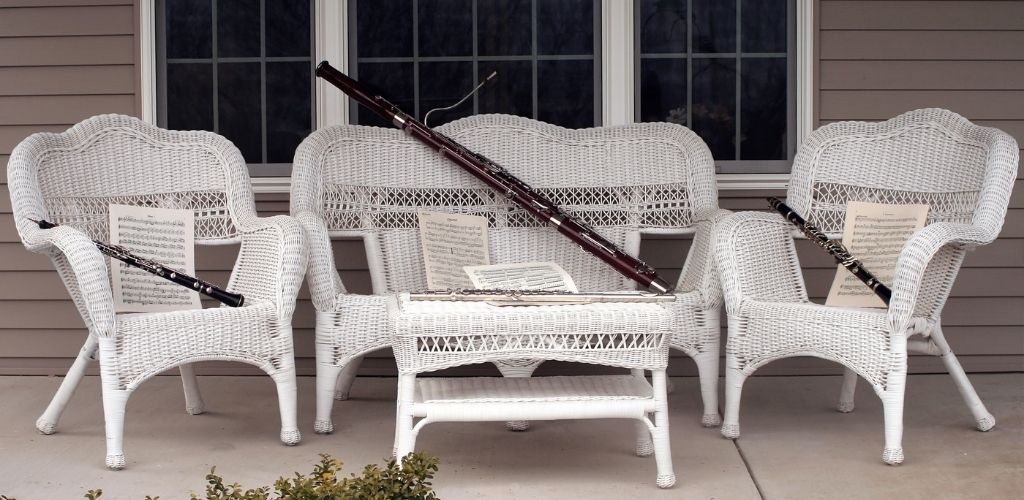
When I hold the clarinet, it usually shines with deep, warm tones from grenadilla or other African hardwoods, which are dense and have beautiful grain, giving the instrument its unique character.
The keys, moving under my fingers, are often coated with silver, allowing me to bring out the music with a touch as gentle as a feather.
The bassoon is made from a mix of materials. Sturdy maple strengthens its body, providing a solid foundation to carry the most delicate notes.
Sometimes silver or nickel, the keys create an intricate pattern across its impressive frame. Weighing about 10 pounds, the bassoon is a force to be reckoned with, designed as an instrument and a centerpiece that demands respect and admiration.
Playing Techniques and Sound Production
The distinct approaches to playing techniques, embouchure, and sound production are fascinating. Specifically, the clarinet and bassoon offer unique challenges and sound palettes due to their singular structures and reed types.
Embouchure and Breath Control

Embouchure is how I shape my mouth and lips to play an instrument. On the clarinet, which uses a single reed, my embouchure involves placing the flat reed against my lower lip, cushioned slightly by rolling the lip over my bottom teeth.
When playing clarinet, my top teeth rest lightly but firmly on the mouthpiece to hold it steady, which helps in creating a focused, clear tone.

With the bassoon’s double reed, the embouchure is more about clamping down on the two reeds. I don’t rest my teeth directly on the reeds; instead, I use my lips to seal around them and regulate the airflow.
Breath control is crucial for both instruments, but with the bassoon, it involves a subtle balance to coax out its warm, mellow tone without overblowing and creating a less desirable, honking sound.
Switching Instrument
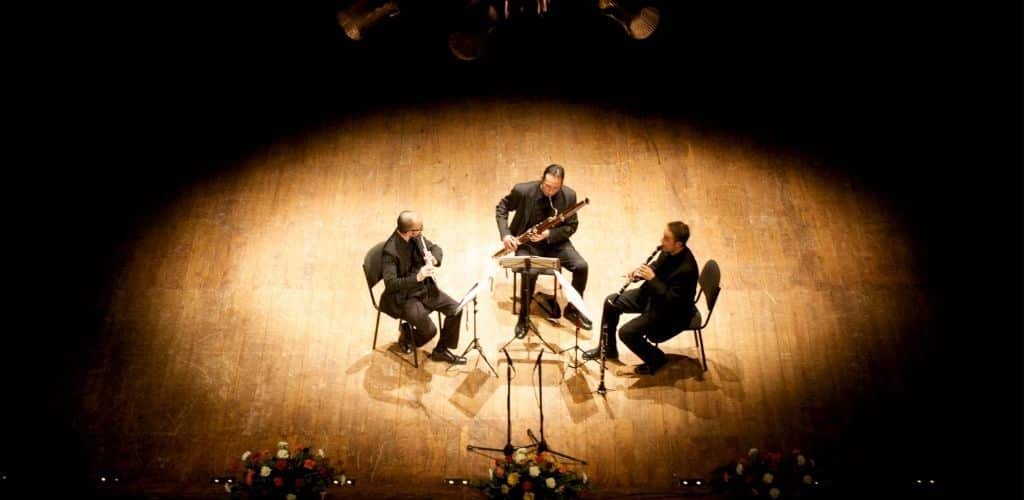
When transitioning from soprano clarinets to an intermediate bassoon, musicians encounter a shift from the treble clef to the bass clef, expanding their understanding of musical notation.
While the oboe plays in the treble clef and shares some similarities with the clarinet’s range, the intermediate bassoon introduces a deeper, more resonant sound, offering a unique musical experience.
Mastery of these instruments allows musicians to explore woodwind music’s diverse tonal qualities and expressive capabilities.
Roles Within Ensembles
Every orchestral instrument has its unique charm, and I find it fascinating how the bassoon and clarinet shine in their roles. They’re like characters in a play, each with their voice in the woodwind family.
In the Orchestra...
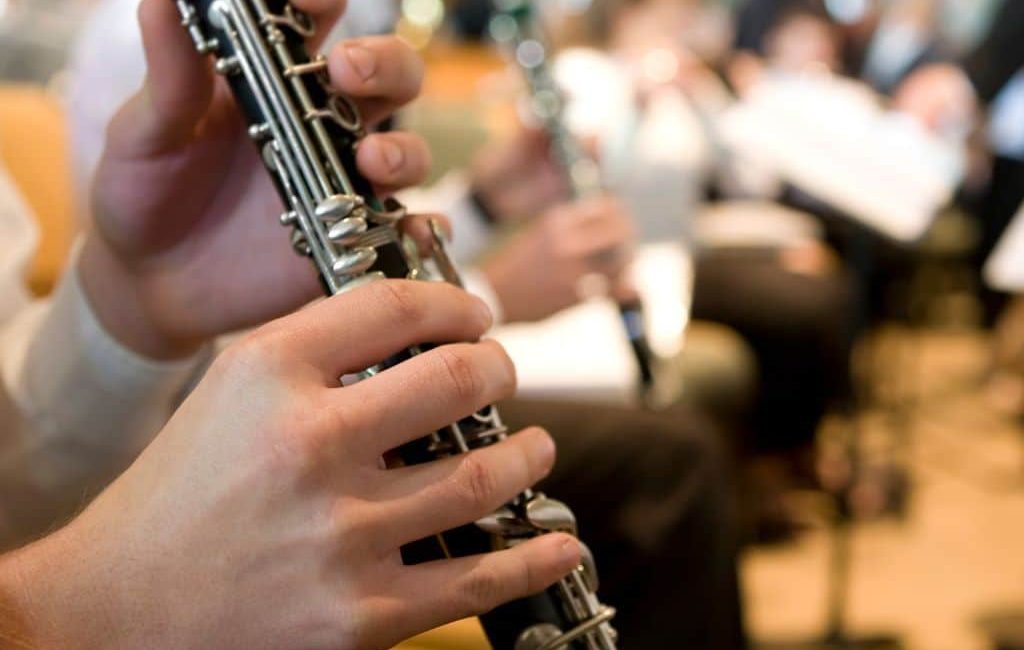
While playing orchestras, I’ve seen that the clarinet often shines brightly with its warm, smooth tones. Nestled among other woodwinds, it effortlessly blends melody and harmony.
It’s not just a background player; the clarinet can take the spotlight in classical and modern music, adding a special touch to the overall sound.
On the other hand, the bassoon is the stalwart – the foundation of the woodwind section. With its more profound and richer sound, it’s often heard, providing bass lines in orchestral textures.
Especially in classical music, it might not always be upfront, but its intricate contributions are key to the depth and resonance of the ensemble.
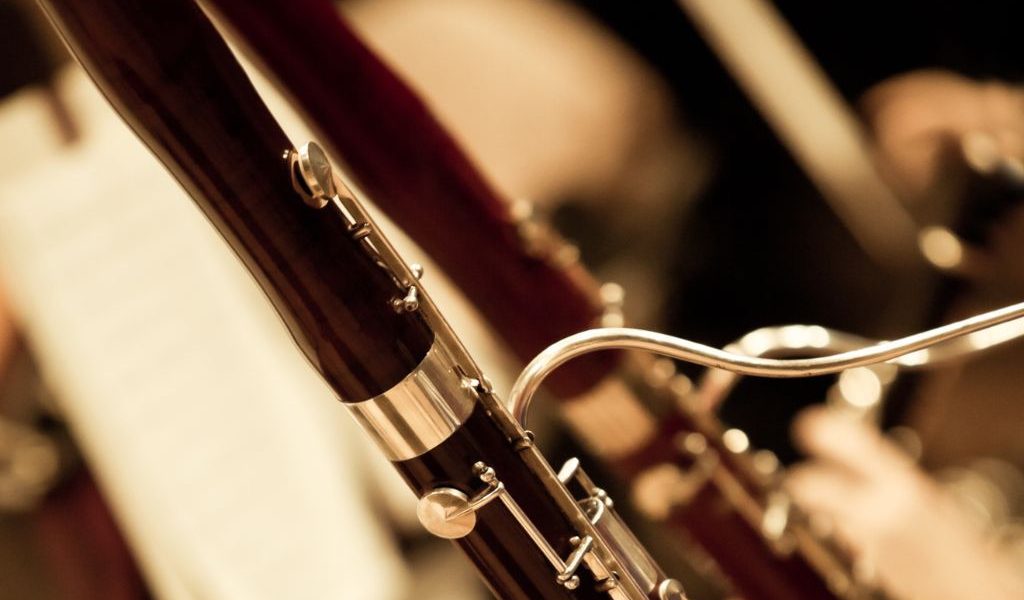
In Bands and Smaller Groups...
When it comes to marching band music, the roles of the bassoon and clarinet become even more distinct yet equally important.
I’ve played in ensembles where the clarinet injects a lively and agile character, perfect for jazz and popular music.
In small groups like woodwind quartets, the bassoon is the reliable support that everyone depends on.
Whether providing a deep foundation or taking the lead with a bold solo, the bassoon is essential, bringing warmth and depth to the music.

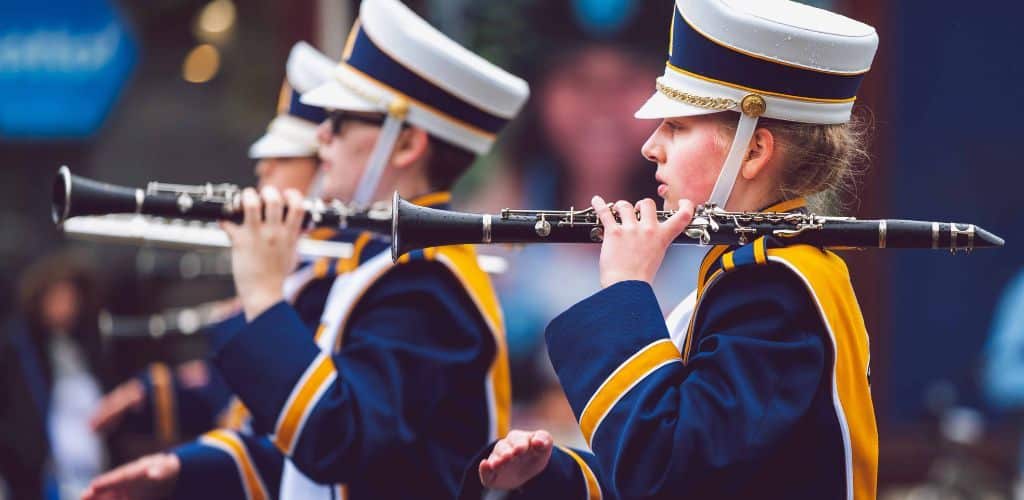
Historical Background and Development
Evolution of the Clarinet

The clarinet has quite an intriguing origin—it’s a tale of transformation and gaining favor in orchestras.
Initially born from the chalumeau around the early 1700s, the clarinet was a rarity in ensembles. Yet, by the time we reached 1740, it began wooing the musicians and earned its place more prominently until 1780.
All it took was a few decades of tinkering and improvements for it to become a beloved member among its siblings, such as the oboe and the saxophone.
Evolution of the Bassoon

Now, the bassoon didn’t get overshadowed in this historical medley—it too has a storied past worth noting. Its own evolution pivots around the same era, becoming an integral part of music, fostering rich, deep tones that could send shivers down one’s spine.
Unlike its cousin, the bass clarinet, which follows in the clarinet’s footsteps, the bassoon stands tall in its unique stature—often considered akin to the cello of my woodwind family.
It’s even spawned the more robust contrabassoon, an instrument so intricate and deep-voiced that it often mirrors those regal English horns.
Reliable Bassoon Brands
Fox Renard Model 222 Student Bassoon
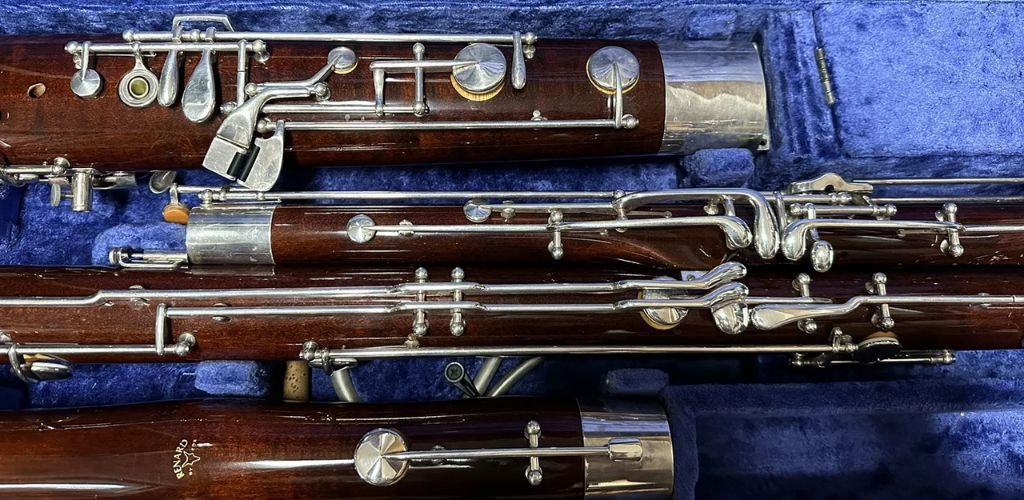
The Fox Renard Model 222 Student Bassoon features a polypropylene body and a full German key system, offering durability and a rich, resonant tone ideal for student musicians. Its precision keywork and reliable intonation make it an excellent choice for beginners seeking a high-quality instrument that is both easy to maintain and play.
Fox Renard Model 222 Student Bassoon
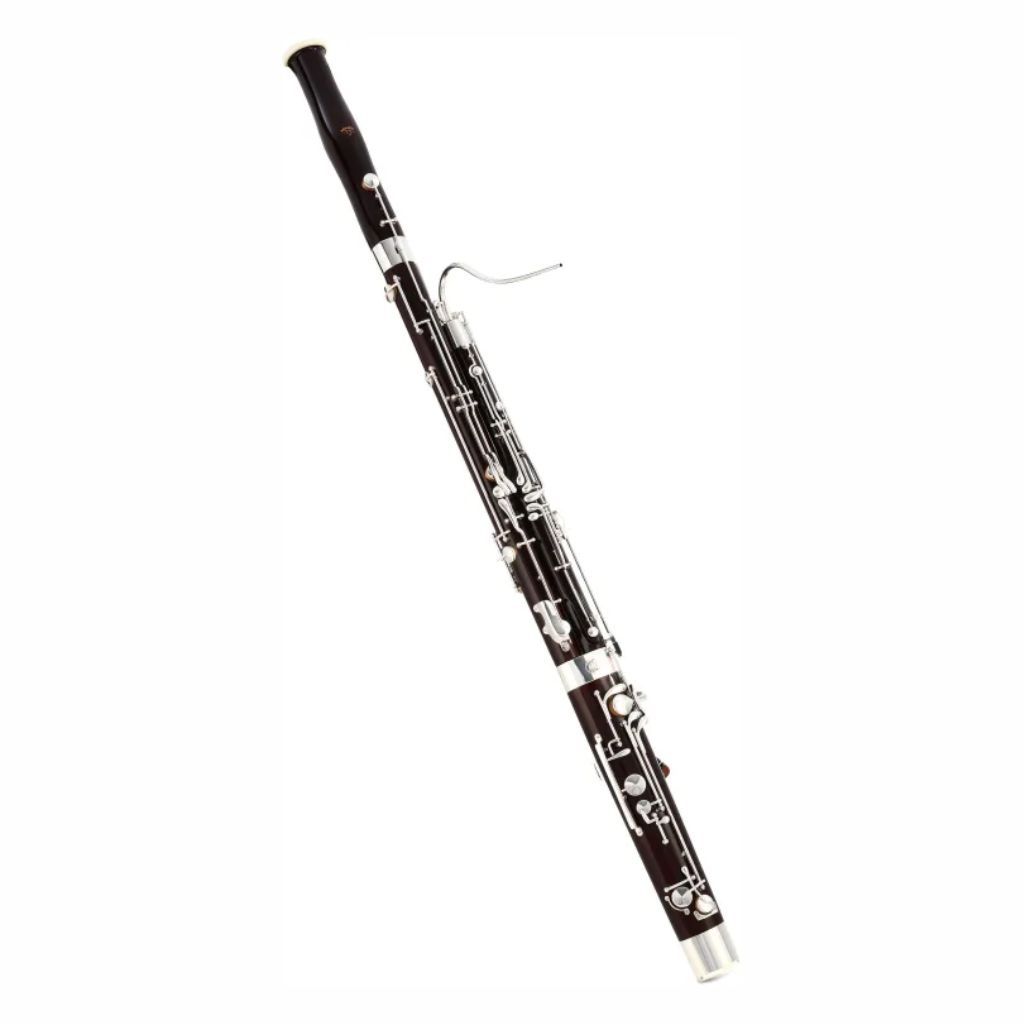
FEATURES: Full German key system with silver-plated keys
OTHER INFO: German bell with an attractive synthetic-ivory ring
- Comes with a premium case with shoulder and backpack straps
- Higher compared to some entry-level student models
When you click ‘Check Price’, you’ll see there are loads of great places to buy this item. Our personal favorite is Sweetwater for the US, and Thomann and Gear4Music for the UK & Europe.
They are the largest music retailers, with excellent customer service, competitive prices, really fast shipping, and the longest guarantees.
The professional musician who wrote this article combined many things,
from the product build, manufacturer’s reputation through to feedback
from other users, to create our famous TedScore™.
Selmer 1432B Student Bassoon with Nickel-plated Keys
The Selmer 1432B Student Bassoon with Nickel-plated Keys features a durable polypropylene body and simplified keywork, making it easy to play and maintain for beginners.
Its warm, resonant tone and robust nickel-plated keys provide reliable performance and longevity, making it an excellent choice for student bassoonists.
Selmer 1432B Student Bassoon with Nickel-plated Keys
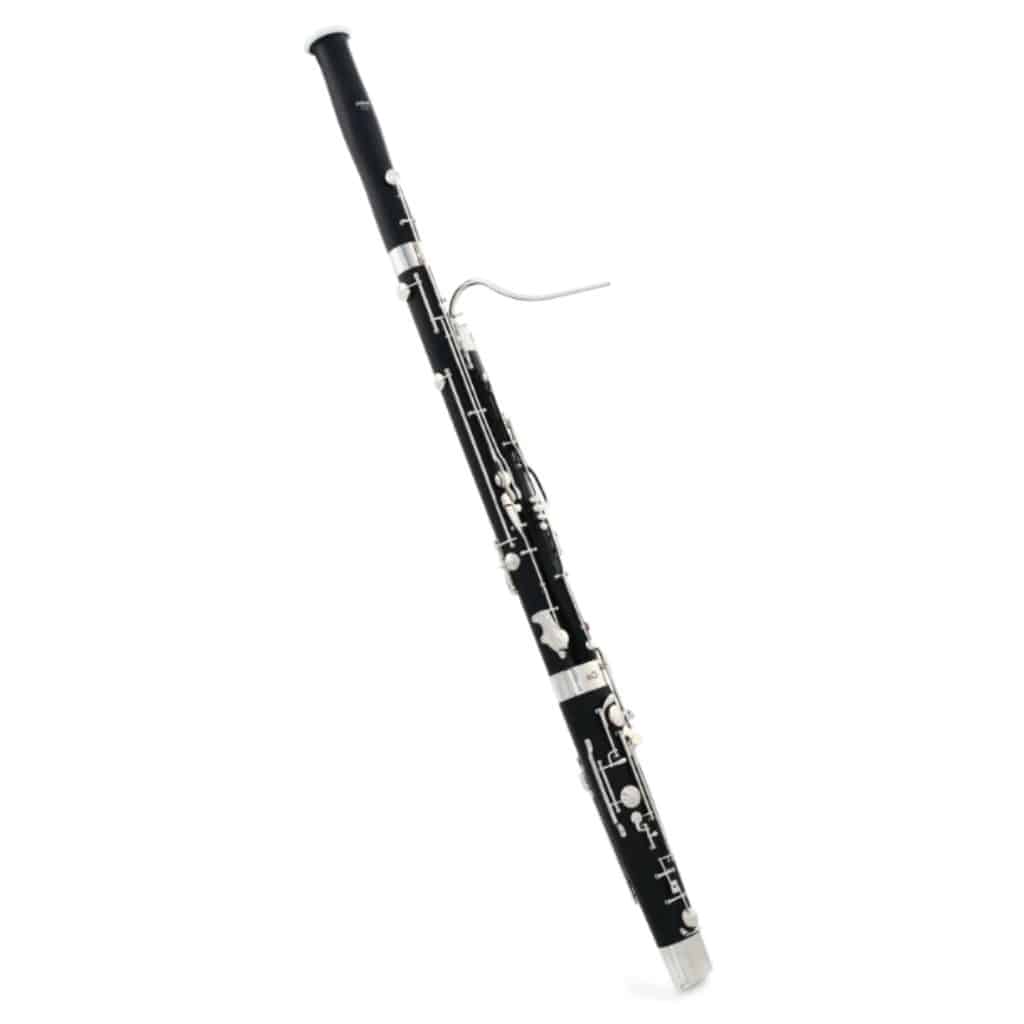
FEATURES: Resonate ABS body combines wood-like sonic qualities with improved durability.
OTHER INFO: Heckel key system with nickel-plated keys and kid leather pads.
- Includes 2 high-quality bocals and wood shell case
- It might have a different tonal complexity and projection than higher-end professional models.
When you click ‘Check Price’, you’ll see there are loads of great places to buy this item. Our personal favorite is Sweetwater for the US, and Thomann and Gear4Music for the UK & Europe.
They are the largest music retailers, with excellent customer service, competitive prices, really fast shipping, and the longest guarantees.
The professional musician who wrote this article combined many things,
from the product build, manufacturer’s reputation through to feedback
from other users, to create our famous TedScore™.
Jupiter JBN1000 Student Bassoon - Full German System
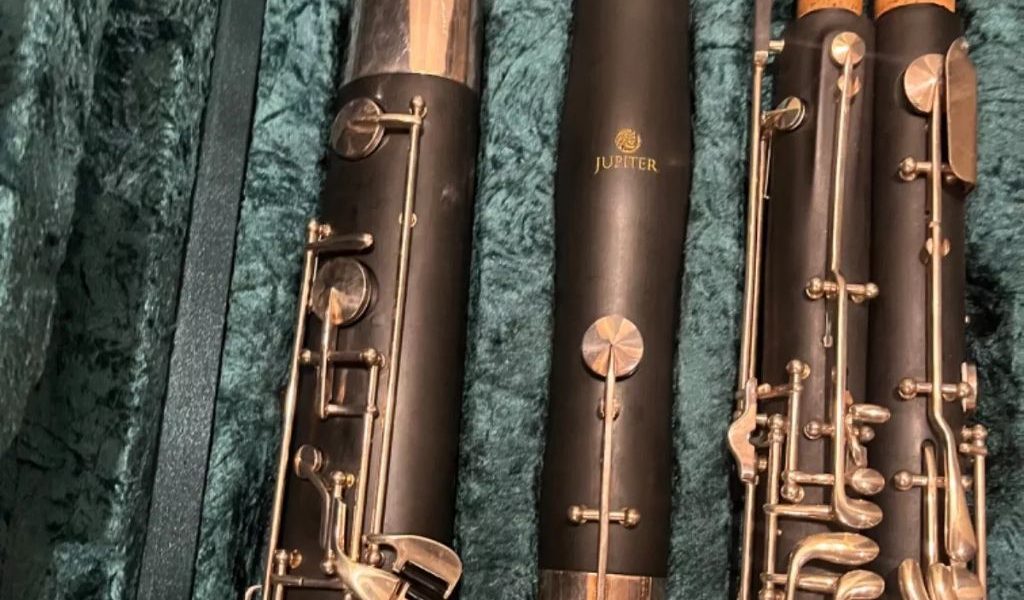
The Jupiter JBN1000 Student Bassoon – Full German System features a durable ABS resin body and a full German key system, providing a rich, resonant tone and precise intonation ideal for student musicians.
Its ergonomic design and reliable keywork make it an excellent choice for beginners seeking a high-quality, easy-to-maintain instrument to develop their skills.
Jupiter JBN1000 Student Bassoon
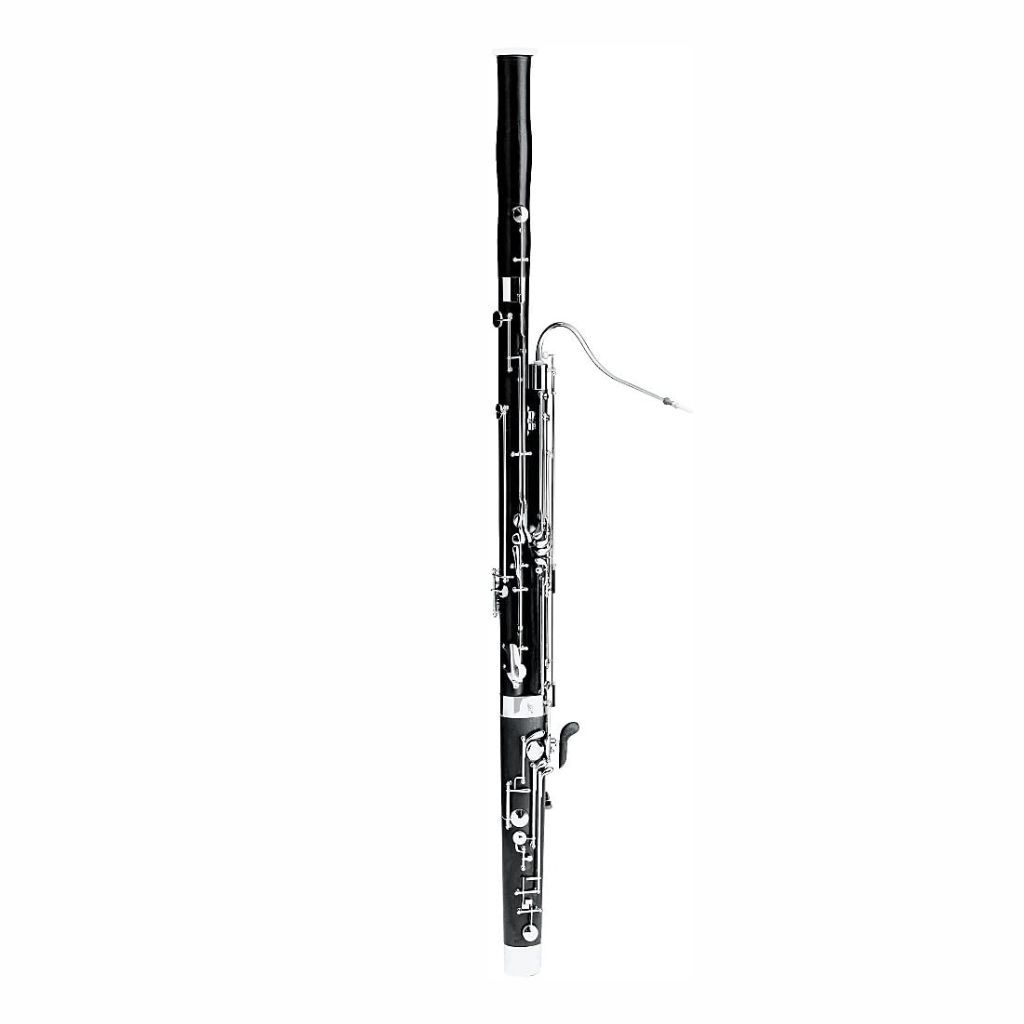
FEATURES: ABS resin body provides a wood-like sound
OTHER INFO: Full German key system with silver-plated keys with High D and plateau C keys
- Includes an attractive wood-frame carrying case
- Limited tonal complexity and projection
When you click ‘Check Price’, you’ll see there are loads of great places to buy this item. Our personal favorite is Sweetwater for the US, and Thomann and Gear4Music for the UK & Europe.
They are the largest music retailers, with excellent customer service, competitive prices, really fast shipping, and the longest guarantees.
The professional musician who wrote this article combined many things,
from the product build, manufacturer’s reputation through to feedback
from other users, to create our famous TedScore™.
Quality Clarinet Brands
Yamaha YCL-255 Student Clarinets
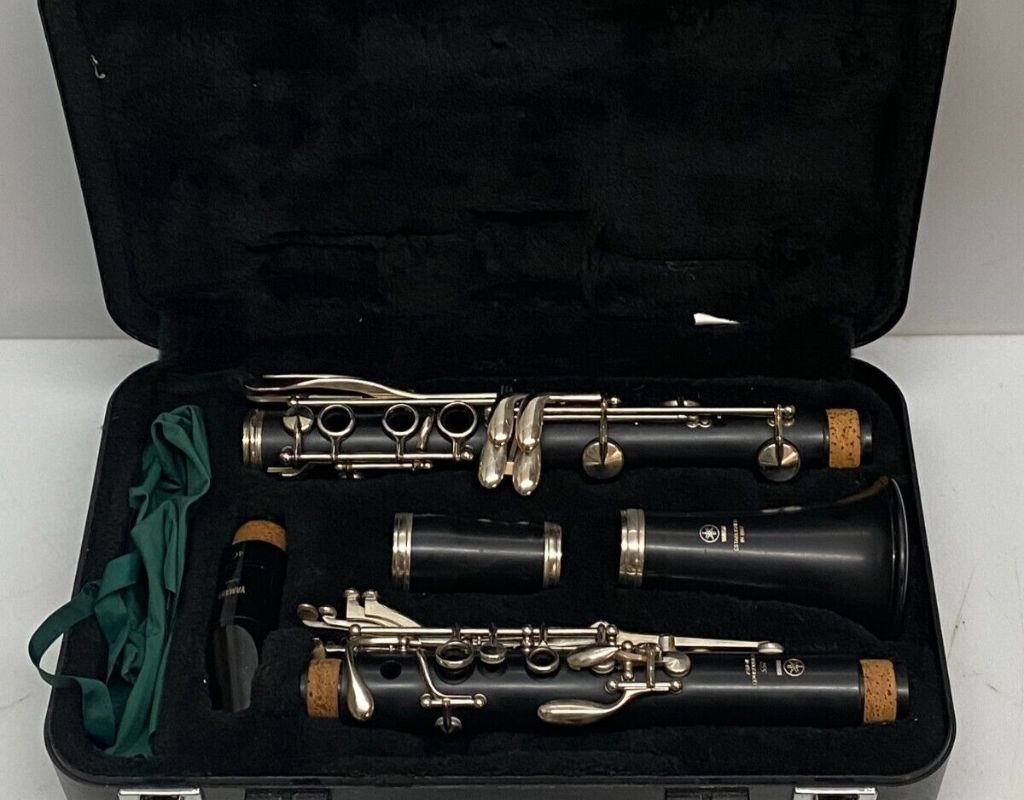
The Yamaha YCL-255 Student Clarinet features a durable ABS resin body that mimics the warm tone of wood while being highly resistant to damage.
Its ergonomic key design and adjustable thumb rest provide comfortable playability, making it an ideal choice for beginners seeking a reliable and easy-to-maintain instrument.
Yamaha YCL-255 Student Clarinets
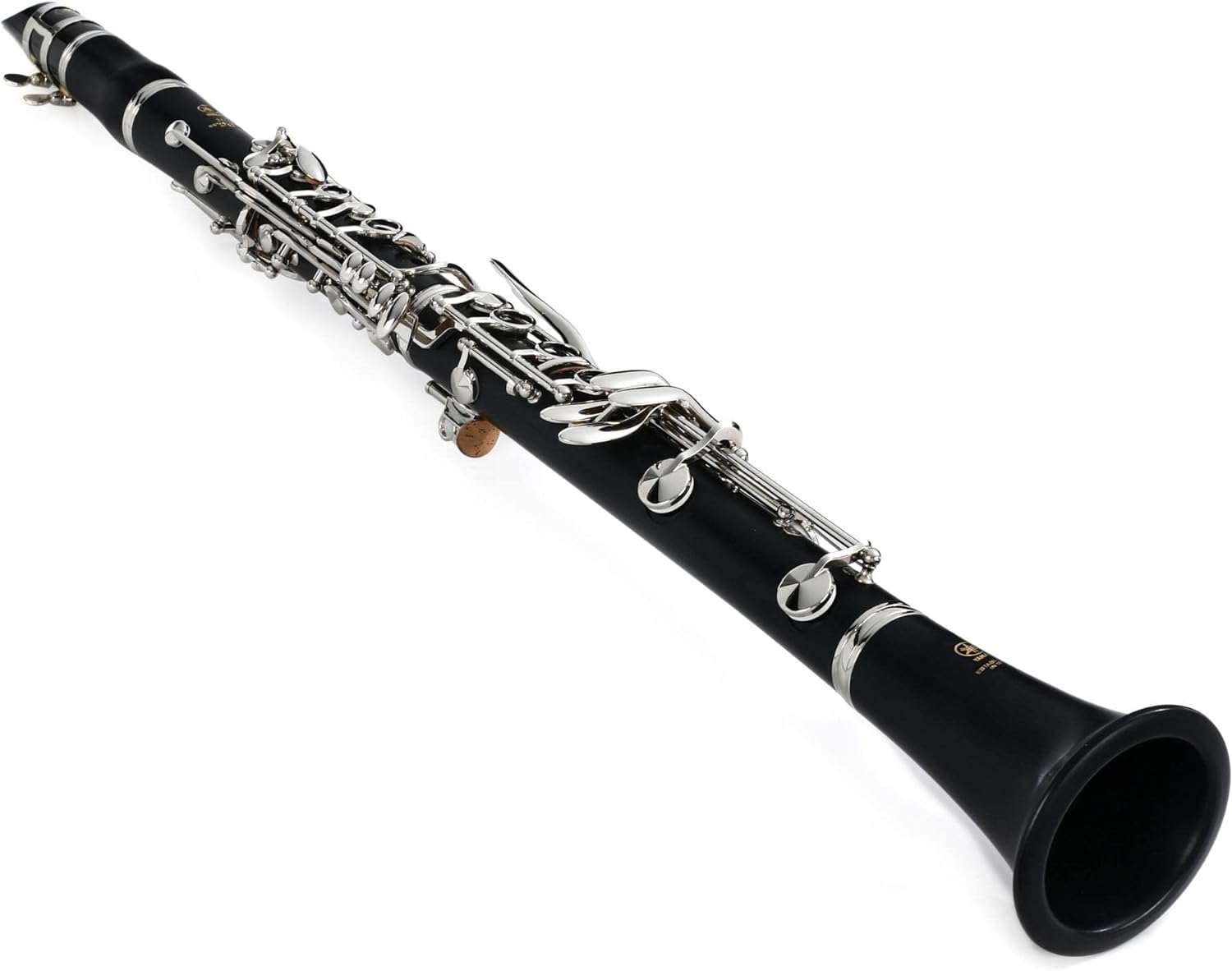
FEATURES: Bb clarinet with Boehm key system, 17 keys, and 6 rings.
OTHER INFO: Nickel-plated keys and Valentino pads.
- Adjustable thumb-rest helps to develop proper technique.
- Includes a 4C mouthpiece — an ideal choice for developing players.
- It may require occasional adjustments for optimal performance.
When you click ‘Check Price’, you’ll see there are loads of great places to buy this item. Our personal favorite is Sweetwater for the US, and Thomann and Gear4Music for the UK & Europe.
They are the largest music retailers, with excellent customer service, competitive prices, really fast shipping, and the longest guarantees.
The professional musician who wrote this article combined many things,
from the product build, manufacturer’s reputation through to feedback
from other users, to create our famous TedScore™.
Buffet Crampon Premium Student
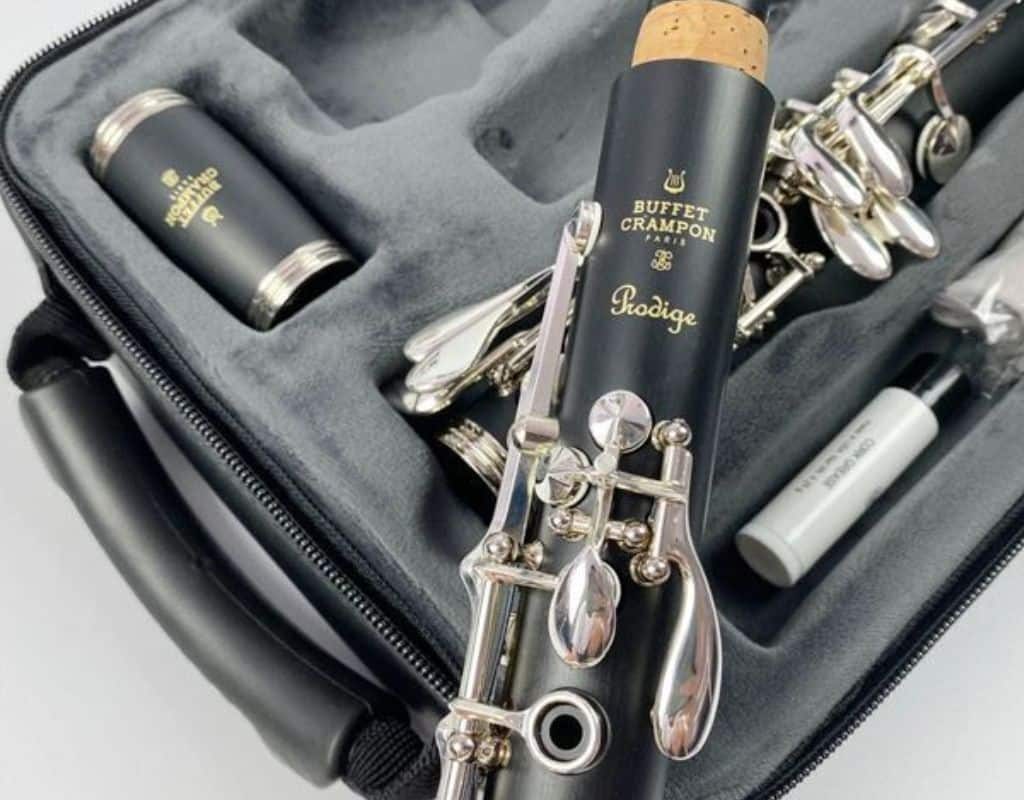
The Buffet Crampon Premium Student Clarinet features a durable ABS resin body that delivers a rich, warm tone similar to that of wood.
Its ergonomic key design and precise intonation make it an excellent choice for beginners, offering both comfort and reliable performance as they develop their skills.
Buffet Crampon Premium Student
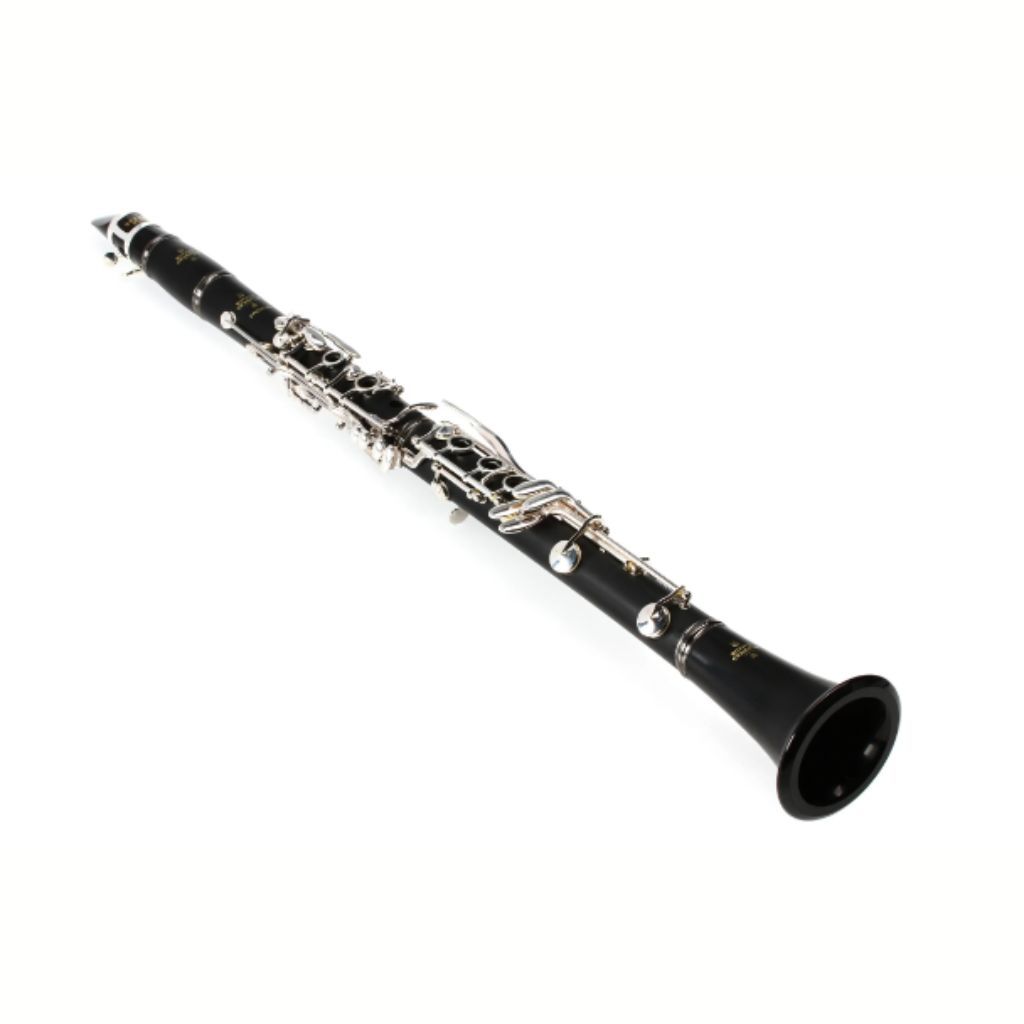
FEATURES: A beginner-friendly 65mm barrel.
OTHER INFO: Responsive and reliable silver-plated keys and double skin pads.
- Adjustable thumb rest accommodates any hand size.
- Higher price point than other entry-level brands.
When you click ‘Check Price’, you’ll see there are loads of great places to buy this item. Our personal favorite is Sweetwater for the US, and Thomann and Gear4Music for the UK & Europe.
They are the largest music retailers, with excellent customer service, competitive prices, really fast shipping, and the longest guarantees.
The professional musician who wrote this article combined many things,
from the product build, manufacturer’s reputation through to feedback
from other users, to create our famous TedScore™.
Backun Beta Intermediate Bb Clarinet
The Backun Beta Intermediate Bb Clarinet features a high-quality grenadilla wood body and silver-plated keywork, providing a rich, warm tone and smooth, reliable action.
Its ergonomic design and precision craftsmanship make it an excellent choice for advancing students seeking a professional feel and sound.
Backun Beta Intermediate Bb Clarinet
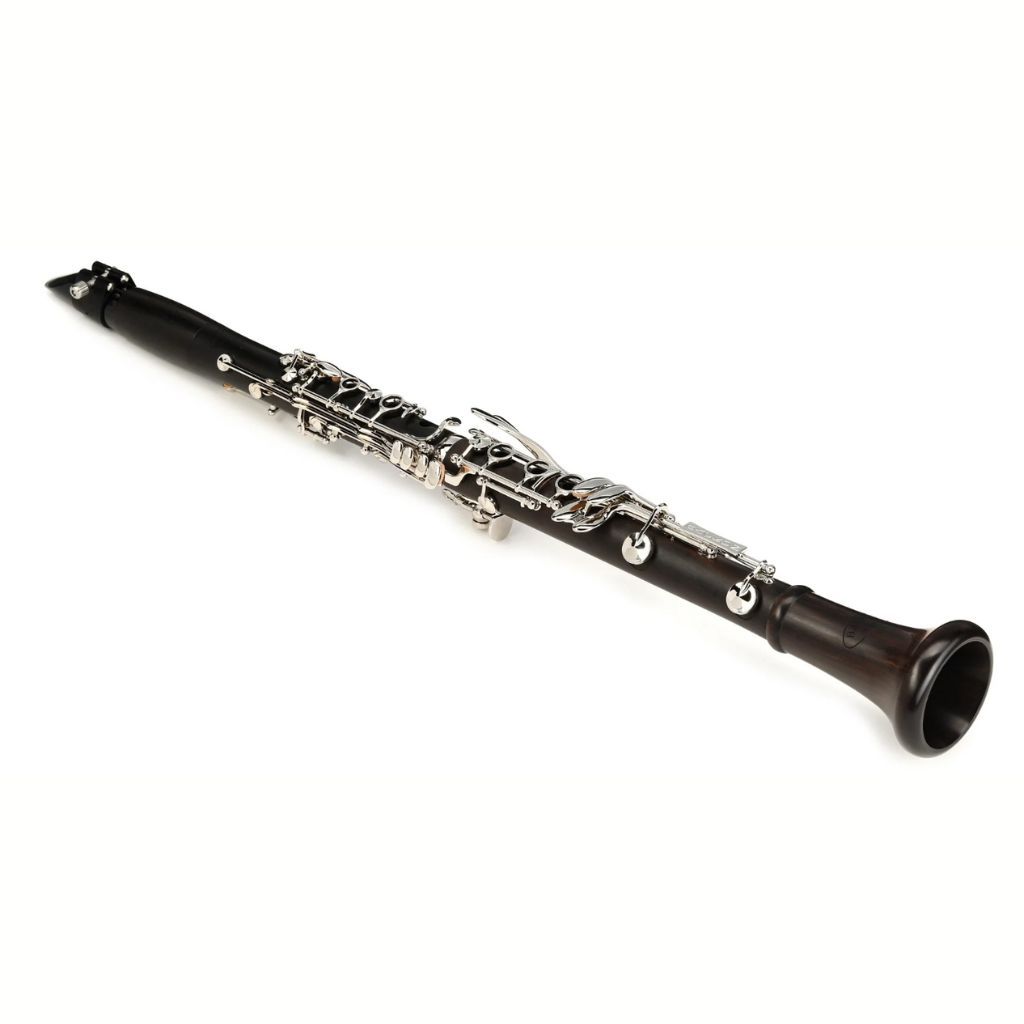
FEATURES: Made from naturally-aged grenadilla wood
OTHER INFO: Silver-plated key tone holes and black leather pads deliver reliable performance
- Adjustable thumb rest with neckstrap ring
- Includes Backun Protégé mouthpiece, Rovner Dark ligature and cap, and Légère Signature synthetic reed
- Comes in a backpack-style case
- The Backun Beta may involve longer waiting periods for purchase or delivery than other intermediate clarinet models
When you click ‘Check Price’, you’ll see there are loads of great places to buy this item. Our personal favorite is Sweetwater for the US, and Thomann and Gear4Music for the UK & Europe.
They are the largest music retailers, with excellent customer service, competitive prices, really fast shipping, and the longest guarantees.
The professional musician who wrote this article combined many things,
from the product build, manufacturer’s reputation through to feedback
from other users, to create our famous TedScore™.
Bassoon Vs Clarinet:
Core Insights
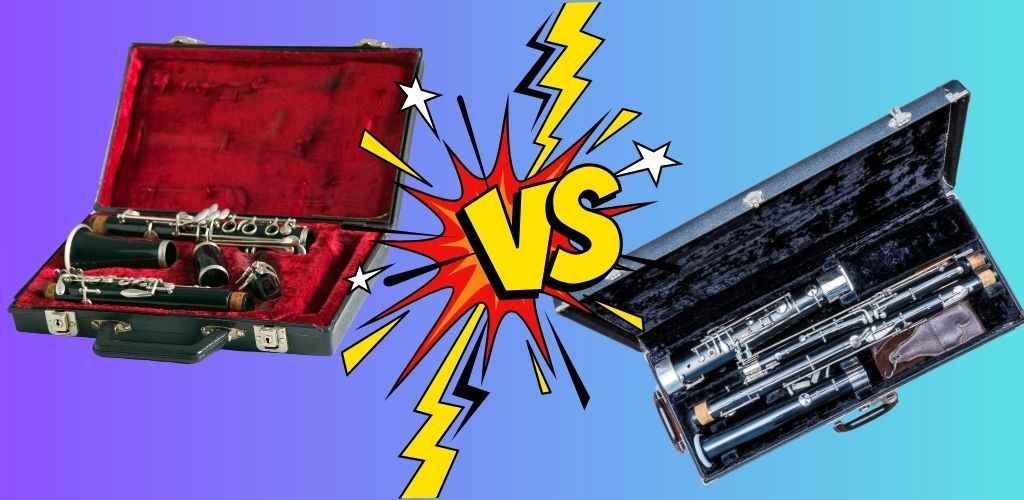
I’m fascinated by the unique qualities of both the clarinet and bassoon. The delicate and versatile clarinet plays a role in many music genres, from classical to jazz.
The bassoon is impressive, weighing 10 pounds and stretching 8 feet long. On the other hand, the clarinet is only about 26 inches long and a few pounds, making it accessible for musicians of all ages.
While the clarinet’s single reed makes it easy to play, I have a soft spot for the bassoon’s double reed charm. Its unique, nasal sound adds depth to the orchestra.
It’s incredible how these instruments contribute uniquely to the world of music. They’ve certainly made their mark on the pages of musical history. Whichever you choose, the world of music is ready to embrace you!
Don’t go yet, there’s more…
Discover the best clarinet for beginners in this comprehensive article.
FAQ's
The bassoon and clarinet present their own challenges, and the difficulty level can vary depending on individual preferences and experiences.
The difficulty of playing the bassoon is subjective and varies from person to person. While some may find it challenging due to its size and double reed, others may find different instruments more difficult to master.
The bassoon’s relative unpopularity may be attributed to its large size, unique double reed, and complex fingering, making it more challenging for beginners than other instruments. Additionally, its limited repertoire in popular music may contribute to its lower visibility.
Yes, a clarinet player can switch to the bassoon, but it requires learning new embouchure techniques and adjusting to the instrument’s larger size and double reed. With dedication and practice, the transition is achievable.










I found the sections detailing the historical backgrounds of the clarinet and bassoon absolutely fascinating, Cory! It’s incredible to consider how these instruments evolved over time and how they’ve contributed to both classical and contemporary music. This article has greatly deepened my appreciation for musicians and the craft involved in playing these complex instruments.
so everyone’s acting like playing the bassoon is rocket science. got one, it’s tough, but not as bad as you all make it out to be. where’s the part about just enjoying the music, huh
Cory Barger?
hey Cory, which one’s better for a total beginner, clarinet or bassoon? kinda leaning towards bassoon cuz it sounds cool.
Interesting points on the embouchure needed for bassoon versus the clarinet, Cory. Having played the sax for years, I’m used to adapting my technique, but the jump to double reeds seems daunting. The way you’ve described the precise breath control needed hints at a whole new challenge. I’m convinced the nuanced sound production is worth the effort, though. Anyone have thoughts on transitioning from sax to one of these?
How long did it take you to adapt to the bassoon after sax, ReedMaster99?
Absolutely worth it, Mel! Both instruments offer unique sound palettes that’ll enhance your musicality. Start with clarinet to ease the transition.